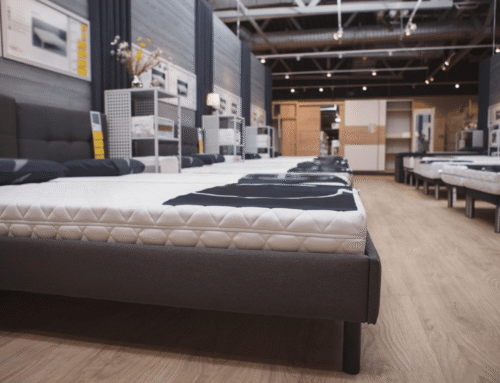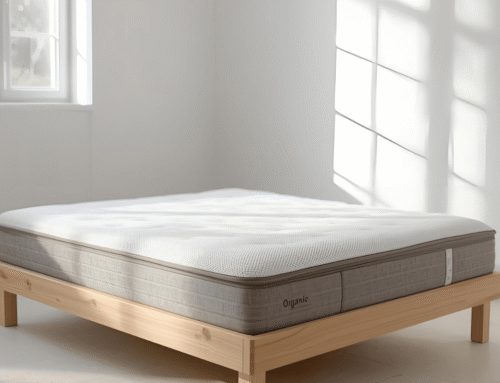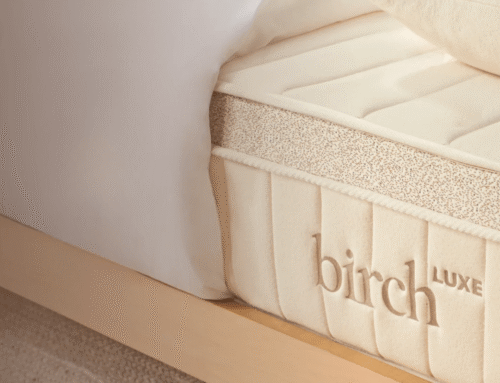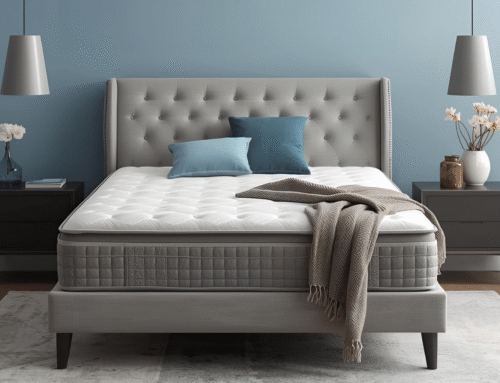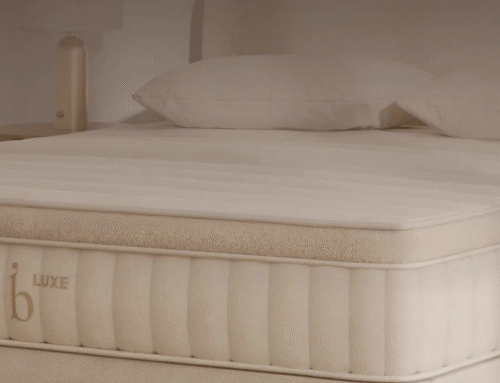People have always tried to sleep better, and honestly, we think that says a lot about what matters most—rest and comfort. The first mattresses weren’t anything fancy, just grass and leaves layered on top of ash, used by early humans over 70,000 years ago.
As time went on, people started using what they had, like palm fibers in ancient Egypt or straw and wool in Rome. Some used feather-filled beds from the Middle Ages, and it sounds cozy, but probably a mess to clean. What stands out to us is how every era tried to improve on the last and show that sleep has always been something worth investing in.
In the mid-1800s, coil springs showed up, and memory foam followed in the 1960s by NASA. Mattress design has changed so much over the years, and the variety keeps growing. When we think about how far mattress innovation has come, it’s worth considering what mattresses are made of and where they’re made, especially in the USA. Let’s talk about who invented the mattress and how far things have come.
Key Takeaways
- Mattresses have been around for over 77,000 years, starting with natural materials like grass, leaves, and animal skins to soften hard ground.
- Ancient Egyptians, Romans, and Greeks made early versions of mattresses using palm boughs, wool, and even raised platforms for better airflow.
- The invention of the innerspring mattress in the 19th century marked a huge shift—bringing bounce, structure, and mass production to sleep surfaces.
- Memory foam and latex foam revolutionized the mattress world in the 20th century by boosting comfort, pressure relief, and durability.
- Today’s mattresses blend high-tech features with comfort, such as cooling covers, hybrid layers, and eco-friendly foams for personalized sleep.
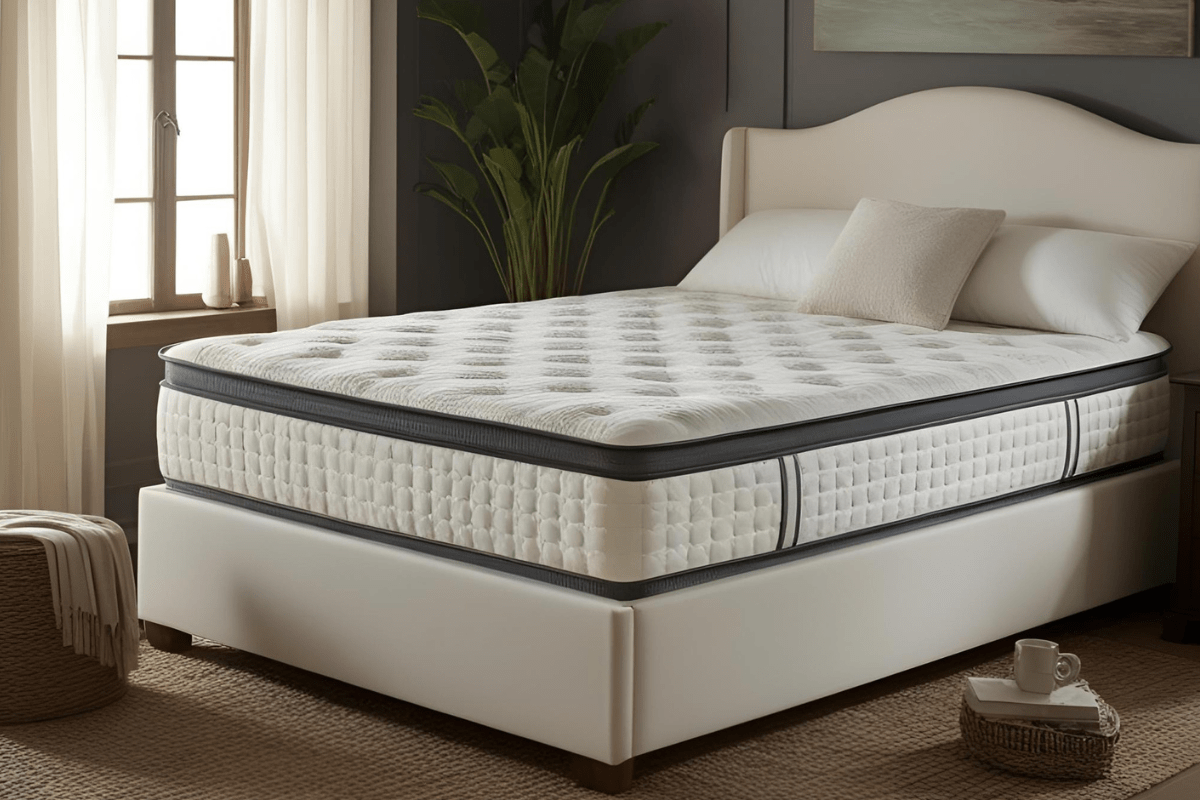
The First Mattress Invention
The first mattress is said to have been created around 77,000 years ago in South Africa. Early humans used layers of plant materials to make bedding, which was about a foot thick and 22 feet long. Though basic, this setup marked the beginning of what would eventually evolve into modern mattresses.
By 3,400 B.C.E, the Egyptians made significant strides in bedding. The pharaohs and the wealthy slept on raised wooden platforms, which are much closer to the beds we’re familiar with today. This was a clear sign of comfort for those at the top of society.
On the other hand, common people of ancient Egypt didn’t have the luxury of raised beds. They slept on palm leaves spread on the ground, showing how bedding had a direct connection to one’s social status. This divide between the wealthy and commoners in terms of comfort has been a part of human history for millennia.
How Mattresses Evolved Over Time
Over time, mattresses have evolved significantly. Around 200 B.C.E, Romans stuffed materials like straw and wool into cloth sacks, creating a more comfortable surface to sleep on. This was a major step up from earlier options, providing more support for a better night’s sleep.
In the Middle Ages, Germans slept in shallow chests or drawers filled with feathers, wool, or hair. Surprisingly, they often slept in the nude. By the 12th century, custom-made bed frames became common, with carpenters handcrafting ornate wooden frames, often decorated with intricate carvings and designs. Meanwhile, the French, by the 13th century, discovered the comfort of pillows. They placed them at the head of their beds to create a slight slope, offering better neck support.
For most people, mattresses remained simple, made from materials like straw or horsehair. While not the most comfortable, these mattresses were a significant improvement over sleeping directly on the floor. This period marks the beginning of gradual changes toward more comfortable sleeping arrangements, eventually leading to the mattresses we know today.
Brief Timeline of Mattress History
- 10,200 B.C.E: Our ancestors created the first beds using leaves, grass, and whatever materials they could find, all covered in animal hides. We can only imagine how exhausted they must’ve been after creating their own makeshift mattresses!
- 3,400 B.C.E: Egyptians started sleeping on piles of palm branches. It’s not exactly what we’d call luxury, but they made do with what was available to rest after long days.
- 200 B.C.E: The Romans advanced the concept by stuffing materials like straw and wool inside cloth to create a more comfortable sleeping surface. It’s a simple upgrade, but we can see how it would’ve been a bit more restful.
- Early 18th century: By this time, mattresses were being stuffed with wool or cotton. It’s interesting to think how this marked the start of the more familiar types of bedding we recognize today.
- 1857: The coil spring was invented, paving the way for what we now know as the innerspring mattress.
- 1871: The first innerspring mattress was created by Heinrich Westphal, changing the way people slept by offering more support.
- End of 18th century: The box spring was introduced, offering even more comfort and durability to mattresses.
- 1929: Latex rubber mattresses came on the scene, giving sleepers more options for comfort.
- 1960s: Waterbeds became a popular trend, offering a unique sleep experience.
By the 1990s and 2000s, mattresses became more about quality and comfort. The bed transformed from just a place to sleep into a spot to watch TV and surf the internet.
Today, there are countless mattress styles, materials, and sizes to choose from. We’ve certainly come a long way from the palm leaves of Ancient Egypt. With innovations rapidly growing since the 18th century, it’s exciting to think about how mattresses will continue to evolve.
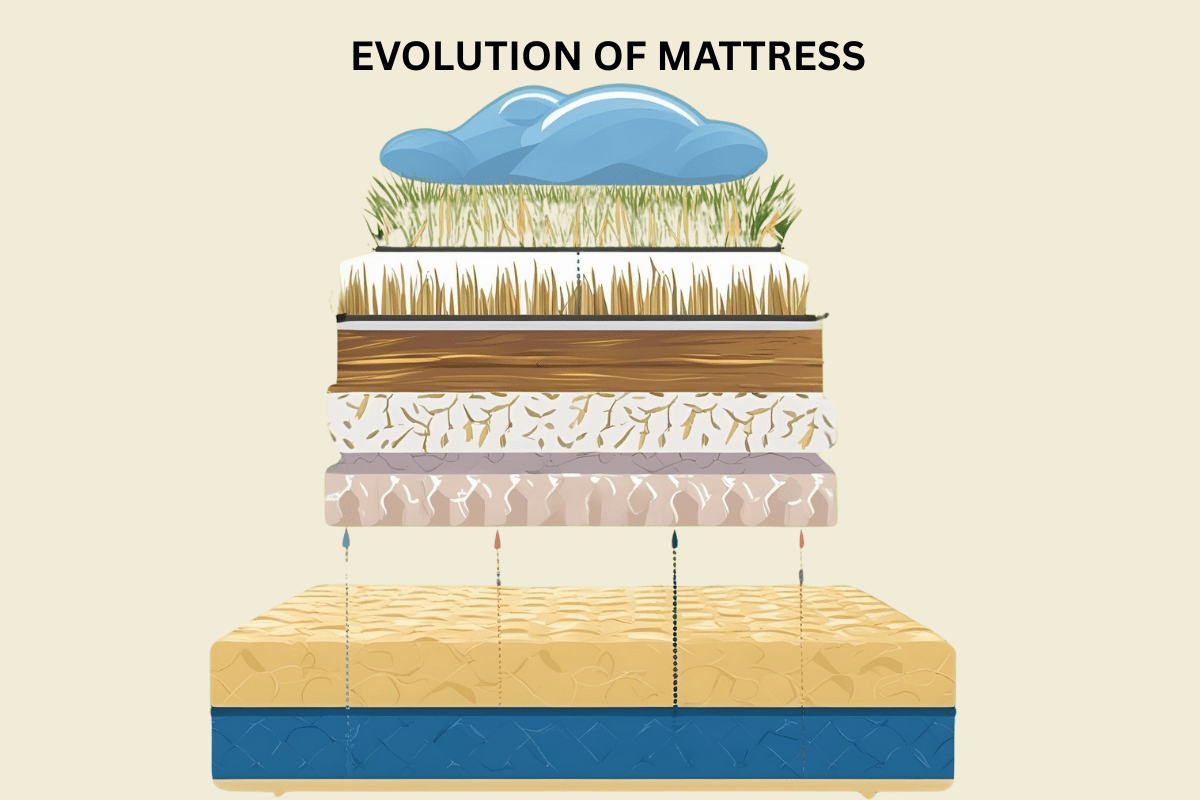
When Were Coil Spring Mattresses Invented?
In 1865, the first coil spring mattress was patented, which sparked a major shift in how people approached sleep comfort. By 1871, the first innerspring mattress was invented with improved support and durability. This innovation helped change the way people slept, a step forward in mattress development.
In 1873, Neil Arnott designed a new type of water bed, originally used in hospitals to prevent ulcers. Though water beds are less common today, they played a crucial role in understanding the connection between sleep surfaces and health. This invention paved the way for future developments in mattress comfort.
In the 1890s, the box spring was invented, adding extra support to mattresses. Iron and steel gradually replaced wood frames, enhancing the strength and longevity of beds. These advancements laid the groundwork for the modern mattresses that have become the standard today.
Memory Foam And Modern Mattress Technology
Memory foam first came about in the 1960s, developed by NASA to help astronauts stay comfortable during takeoff. It’s pretty interesting how something so specialized made its way to everyday use, especially in mattresses. Over time, it became a staple in our homes, offering that unique, body-conforming support.
By the 90s and early 2000s, memory foam was everywhere, and we all felt the difference in how it cradled the body. Later, we saw latex and hybrid mattresses enter the market, each bringing a new level of comfort and innovation. It felt like every time we turned around, there was a new type of mattress to try.
Today, mattresses keep evolving with features like temperature control, motion isolation, and eco-friendly materials. More options make it easier to find something that fits your unique needs. It’s clear that mattress technology has come a long way, and it’s exciting to see where it’s headed next.
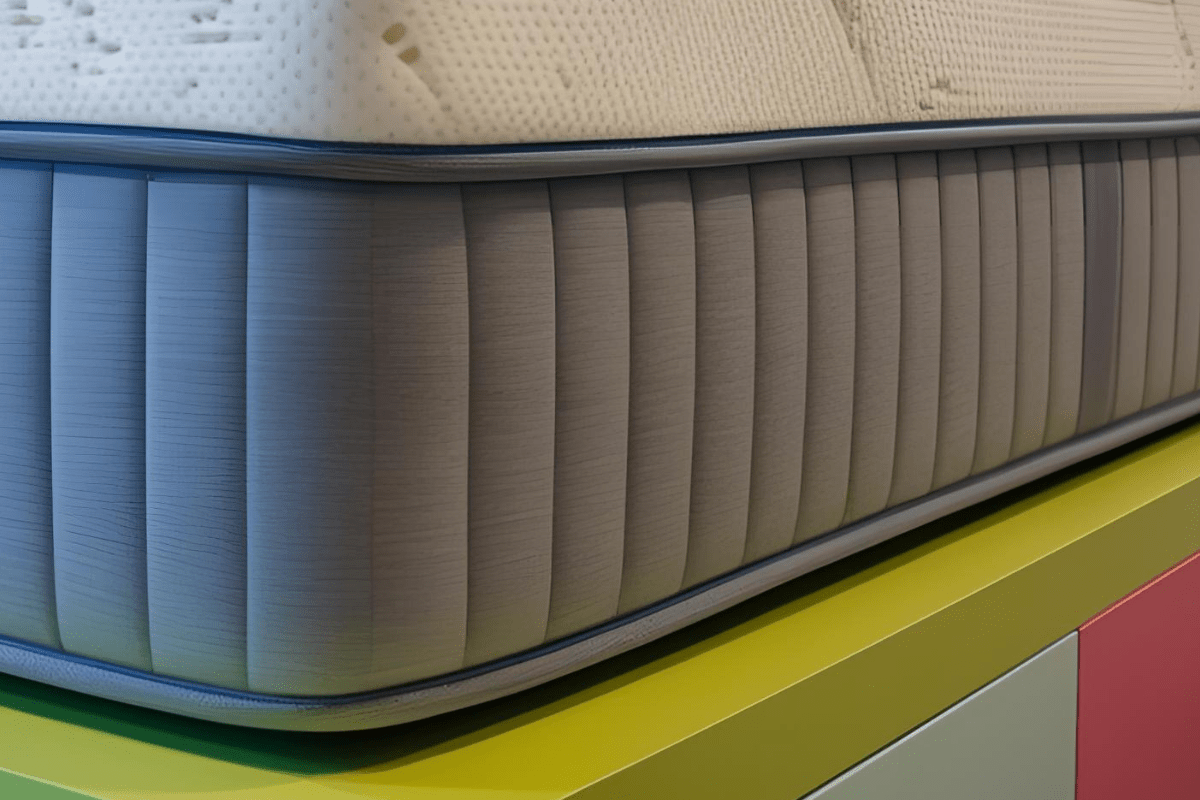
Why Early Mattress Materials Mattered
In the past, mattress materials were largely shaped by what people had access to. Grass, straw, and leaves were common, as they provided basic support but often left us uncomfortable. While animal skins and wool added warmth, they could be pretty hard to manage over time.
Some options like feathers gave softness but came at a higher cost. Straw, on the other hand, was inexpensive, but it came with the downside of being itchy and not very durable. As we got smarter about materials, alternatives like horsehair and cotton offered better comfort but still didn’t quite last long enough for real longevity.
Then came foam, latex, and coils. These materials are a lot more practical, offering solid support and lasting much longer than what we used before. We’ve all benefited from the shift to these modern materials since they’re much better at offering both comfort and durability over time.
As we transitioned from basic materials like grass and straw to more sophisticated options, the evolution of mattress materials played a crucial role in improving both comfort and durability. Common mattress materials and an understanding of bed anatomy significantly impact how mattresses are designed today. Knowing how these materials contribute to a mattress’s structure can help you make informed choices when finding the right mattress for your needs.
How Sleep Needs Changed With Time
As time has gone on, sleep needs have shifted quite a bit. In the past, people were mainly focused on staying warm and off the ground. As living spaces improved, comfort became a bigger concern. Now, comfort is about more than just softness, it’s about support that fits how you sleep and what your body needs.
Today, mattresses come in all sorts of styles and options, from firm to soft and everything in between. You can find innerspring, memory foam, or even hybrids, depending on what feels right for you. Some even come with adjustable bases or built-in massages for that extra touch of luxury. We’ve moved past just sleeping, now, we’re thinking about how sleep impacts our overall health and energy.
Your mattress isn’t just a place to crash at the end of the day. It’s a crucial part of getting restful sleep. Getting the right fit can really affect how you feel throughout the day. With all the options out there, finding the one that suits you best is essential for feeling your best. Recognizing what are the signs you need a new mattress and how often you should replace your mattress is important in making that choice.
Mattress Innovation In The 21st Century
- Eco-friendly and organic materials: In recent years, we’ve seen mattress brands shift toward using eco-friendly and organic materials. There’s a growing demand for sustainable options that not only support a good night’s sleep but also help reduce our environmental footprint.
- Cooling features to prevent overheating: Cooling features are now a standard in many mattresses. They help regulate body temperature to make it easier to stay asleep without tossing and turning.
- Customizable firmness and split beds for couples: Customizable firmness options are a great innovation, especially for couples with different preferences. With split beds or adjustable firmness levels, both partners can find the perfect setup for their individual needs.
- Online mattress-in-a-box delivery: The convenience of online mattress shopping has completely changed the way we buy beds. With mattress-in-a-box delivery, we get the chance to try mattresses at home, without the pressure of salespeople, which makes the decision process so much easier.
- High-tech beds that track sleep patterns: More mattresses now come with built-in technology that tracks your sleep patterns. With this kind of innovation, we’re getting closer to understanding what our bodies need to sleep better.
This evolution in mattresses is just the beginning. As the industry continues to improve, we’re likely to see even more advancements designed to help us sleep better and live healthier lives.
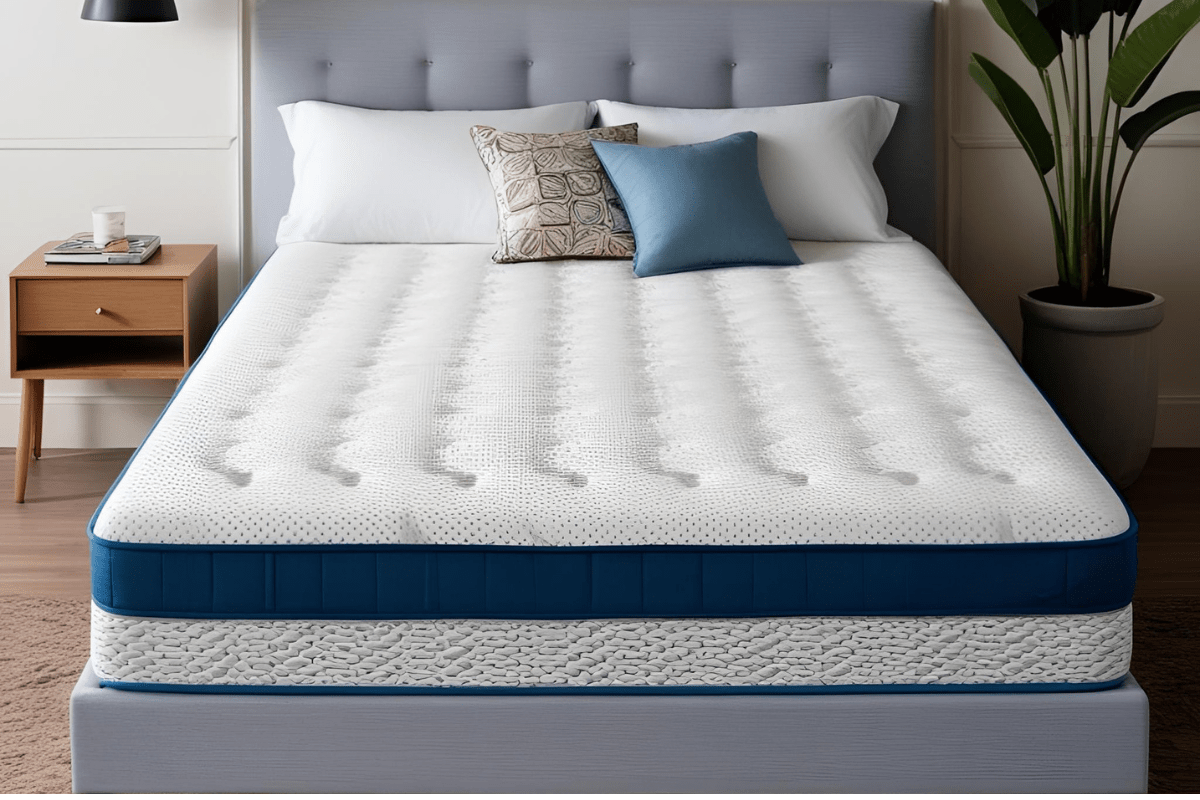
Why Knowing Mattress History Helps You Buy Better
Knowing the history of mattresses can really help you make a smarter purchase. Understanding how materials like memory foam offer great support but might trap heat, or how innersprings tend to last longer without giving that body-hugging feel, allows you to choose based on what suits your sleep needs best.
When you know the ins and outs of different mattress types, you’ll be able to spot a quality option without falling for the flashy marketing. A lot of companies push beds that look great but don’t live up to expectations, and being aware of these tricks can save you money and hassle.
By learning how mattresses have evolved over time, you’ll also have a better sense of durability and value. Knowing which features matter for your sleep style can help you pick a bed that fits your needs, rather than just what’s trending or heavily advertised.
Additionally, understanding how to choose a mattress, the best time to buy one, and how much you should spend can guide you toward a purchase that suits both your needs and your budget.
Final Thoughts
No single person invented the mattress. It’s actually the result of a long journey, shaped by many cultures, materials, and needs over thousands of years. It all started with early humans using leaves, grass, and animal skins as makeshift beds. While not as comfy as what we sleep on today, it worked for survival. Over time, people found more practical ways to create softer and more supportive surfaces.
As centuries passed, mattresses became more sophisticated. Ancient Egyptians and Romans used materials like wool and feathers, bringing a little luxury into their sleep routines. Fast forward to the 19th century, when innerspring coils came into play, offering more support and comfort, helping many sleep better. Innovations kept coming, with foam and adjustable beds appearing in the 20th century.
Today, we have high-tech mattresses, some even tracking your sleep and adjusting for maximum comfort. It’s amazing how the simple need for rest has shaped such an intricate industry. From the humble beginnings to today’s advanced options, the journey to a perfect mattress has truly been a blend of practicality and creativity.


